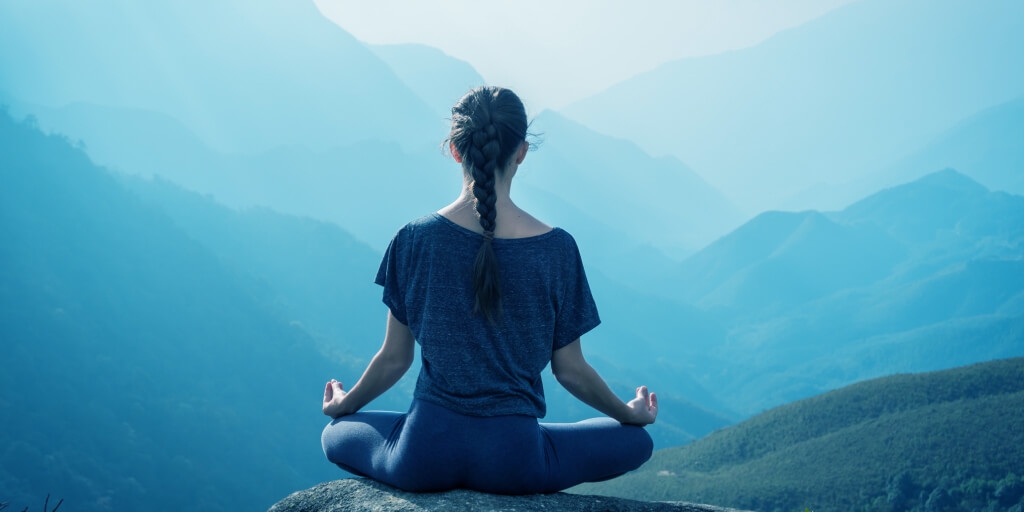Table of Contents
Stress and anxiety are are a common part of life for many people. Starting a new job, moving or a relationship ending are normal triggers for short-term anxiety. However, some people suffer from debilitating anxiety that can come in bursts at any time without warning.
Stress can be a killer, literally. Left untreated, anxiety can cause high blood pressure, heart disease and depression, which could lead to suicide. While stress and anxiety aren’t the same things, they do feed off each other and are usually diagnosed together.
It’s estimated that 40 million adults in the US alone have problematic anxiety. Problematic anxiety means that it interferes with their life.
Symptoms of anxiety can include emotional, behavioral and physical symptoms such as:
- Constant worry
- Difficulty sleeping
- Tense muscles
- Clammy (cold) or sweaty hands and feet
- Irrational fears
- Shortness of breath
- Avoidance of social situations
Before you can begin finding a way to reduce anxiety, it’s important to understand where anxiety comes from.
For many people suffering from anxiety, it manifests itself in panic attacks so severe that they cause hyperventilation or increased heart rate.
That happens because the body’s autonomic nervous system (ANS) is in control of these involuntary functions. The ANS is further separated into two nervous systems – the parasympathetic and the sympathetic systems.
The parasympathetic system is usually in control of the body. It’s called the “rest-and-digest” system because it stimulates activities when the body is at rest. The sympathetic nervous system controls the “flight-or-fight” response to fear and immediate threats. As a response to those situations, it takes control from the parasympathetic system.
Some amounts of anxiety (and fear) are completely natural responses to stressful situations. It becomes a problem when the ANS doesn’t recognize the difference between real and imagined threats.
Stress and anxiety will always be present in your life. There is nothing you can do to change that. However, you can try coping methods to reduce your extreme reaction to anxiety.

Here are 5 coping methods for anxiety:
Get enough sleep
It seems like an oxymoron because anxiety causes restlessness and difficulty sleeping. However, having a regular sleep schedule can help reduce your anxiety.
Hit the gym
Exercising causes your brain to release endorphins. This, in turn, triggers a happy feeling. Of course, if part of your anxiety cripples you from public places, you can work out in your own home.
Eat healthy food
One symptom of your anxiety might be the loss of appetite, but you should try to keep a balanced diet.
Avoid caffeine and alcohol
Alcohol is a depressant that will only make your mental health worth. Caffeine will contribute to your problems sleeping.
Engage in guided meditation for anxiety and relaxation exercises
A big part of anxiety is worrying about things that will happen in the future or have already happened in the past. Meditation and relaxation can keep you focused on the present.
Relaxation therapies and meditation are two techniques proven to help reduce anxiety. Let’s explore those more in-depth.

How Can You Meditate to Stop Anxiety?
The practice of meditation is often used in references to religion, especially Buddhism. But there are millions of people who meditate without religious purposes. Meditation is used to calm the mind and focus on the present moment.
There are many different types of meditation. Visualization and contemplation are two meditation practices. Mindful meditation is the most mainstream technique. It involves being aware of something by focusing your mind on it. For example, breathing meditation is a popular form of mindful meditation.
Meditation doesn’t have to take hours; it can be done for a few minutes every day or whenever the anxiety surfaces.
One way anxiety rears its ugly head is in negative self-talk or thought patterns. Humans generally have 50,000 thoughts every day and too many of those thoughts are negative, especially if you suffer from anxiety.
But don’t despair. It turns out the brain has the amazing ability to change – neuroplasticity. It does this by forming new neural connections or strengthening existing connections. Neuroplasticity is responsible for improving your ability to control worry, unwanted thoughts and negative reactions to stress.
Meditation can improve neuroplasticity by training your brain to think differently and focus less on the past or the future. If you do find yourself starting to worry, meditation will teach you how to recognize the thought and let it go.
Meditation has been thought to help increase blood flow and balance brain chemicals. Blood flow helps the synapses to make connections. We know that a chemical imbalance of the brain can cause types of depression, such as bipolar disorder. It’s reasonable to conclude that balancing the brain chemicals can help ease anxiety the way it has been known to treat depression.
If letting your mind run wild while sitting alone in a room (or in a room full of people) isn’t your thing, there are many other meditation techniques you can try. Moving meditations, such as tai chi, yoga or even mindful walking are great ways to exercise your body while getting in your daily meditations.
You can turn any activity into a short meditation session – doing the dishes, brushing your teeth or eat are all moments where you can focus your mind on the task and not your negative thoughts.

What is the Autogenic Relaxation Technique?
Autogenic relaxation training (AT for short) is somewhat similar to meditation. It also trains your brain, except instead of training your brain to focus on an object, you train your brain to follow your commands.
AT is meant to be used as a way to manage stress and anxiety, but it can also improve your physical and mental health. The technique has been around for almost 100 years. In the simplest terms, autogenic training is self-hypnotization.
By putting yourself into a trance-like state, you can control your heart rate, breathing and blood pressure. These are three bodily functions that can get severely agitated by anxiety.
It sounds simple and it is. It’s also effective in reducing anxiety, as well as having many other benefits. The basic technique is to sit or lie in a quiet area and repeat calming mantras to yourself over and over until you find yourself relaxed.
We’ll include some of the mantras you can use at the end of the article.

How to Practice Relaxing
We’ve established that the body’s fight-or-flight response is a big contributor to stress and anxiety. You can combat stress by producing the polar opposite response – the relaxation response.
We all face stress every day, yet we don’t practice techniques to reduce stress everyday. Beginning a daily relaxation routine can lower your anxiety, as well as improving both your mood and your overall health.
Activating the relaxation response can help you:
- Lower blood pressure
- Increase blood flow to the brain
- Slow down heart rate
- Breathe easier
- Increase focus
Vegging out on the couch isn’t enough to produce adequate relaxation response to fight everyday anxiety and stress. You can try relaxation techniques from a profession, such as massages or acupuncture, but there are also techniques you can practice by yourself anywhere, such as:
Deep breathing
The purpose of deep breathing is to focus your mind on your inhale and exhale as you take deep, cleansing breaths. Some people find it helpful to include aromatherapy to their relaxation process, or even music. However, all you really need is a place to sit and get your anxiety under control by breathing from the abdomen.
Typically, when we breathe, we take shallow breaths from the chest. Breathing from the abdomen provides you with more oxygen. In turn, the oxygen increases blood flow and can result in reduced anxiety.
The deep breathing technique is similar to the deep breaths your doctor asks for when they put the stethoscope to your lungs. The exercise can be done sitting upright or lying down. Simply place one hand on your stomach and the other on your chest. As you breathe in (from the nose, not the mouth,) the hand on your chest should move a small amount while the one on your stomach rises significantly.
When you exhale, the hand on your stomach should retract inward and the other hand remains almost still. Repeat the process of slowing inhaling and exhaling. Counting each breath can help the relaxation response.
Guided imagery
Also known as visualization, guided imagery is imagining a relaxing scene or memory in your mind of focusing on that. Just ‘seeing’ it isn’t enough; you need to include specific sensory details, such as sound, smell or taste.
It is basically a vivid daydream. But it should relax you and release your anxiety.
Progressive muscle relaxation
As the name suggests, progressive muscle relaxation is tensing and relaxing various muscles in the body. Before you being the relaxation exercise, make sure you are comfortable. Wearing loose clothing or taking off your shoes can help. Once you are comfortable, start with a few deep breaths. Start with your foot by slowly tensing the muscles and hold for ten seconds. Release the muscles and relax. As you are going through each muscle, put all of your focus and attention on that muscle.
Continue with your other foot and slowly work your way up to your face, in a left-right pattern.
Self-massage
Unlike professional massages, self-massage can be done at home or in the office and it’s free! The massage can be anything from chopping your muscles with the side of your hand, working your thumbs into your neck or deeply massaging your arm or leg muscles. Whatever area of your body feels tense is where you should massage.
This is a great way to relax before bed or in the middle of the workday.
Body scan meditation
The body scan meditation is almost the same thing as the progressive muscle relaxation, except you don’t tense your muscles. You don’t do anything except focus your mind on a specific part of your body for two minutes before moving on to the next. While you're focusing your attention on each body part, you want to notice how they are feeling or any sensations you are having in the body at that moment.
Start at the feet and slowly work your way up to the face. If you feel discomfort or pain anywhere in the body, focus your attention there and see if it can be relieved.
Mindful meditation/movement meditation
Mindful meditation can involve repeating a mantra, taking a Yoga class or practicing tai chi. The purpose of all of these relaxation techniques is to calm your mind by focusing on your body.

Guided Meditation Scripts to Keep Handy
Meditation scripts are short phrases or mantras that you repeat to yourself to help calm down. They can also help you fall asleep at night. It’s a form of self-hypnotization. Each phrase should be repeated 6 times before moving onto the next one or you can repeat it all the way from the beginning. Your manta should be something that speaks to you personally and helps calm you down.
You can make your own scripts or follow samples like these:
- I am present
- My breathing is calm
- I am here
- I am strong
- My heart is steady
- I am calm
- I am worthy
- My mind is strong
- I am capable
If you frequently find yourself suffering from forgetfulness, fuzzy thoughts and lack of energy, you might be having anxiety. Any of these meditation techniques can help you focus your mind and ease your symptoms.
Do you already practice guided meditation for anxiety? Feel free to share some of your anxiety-reducing tips down below!
Sources:
https://www.goodtherapy.org/blog/12-surefire-strategies-for-coping-with-anxiety-and-stress-0513155
https://www.verywellmind.com/how-to-cope-with-generalized-anxiety-disorder-1393164




Comments
Loading…